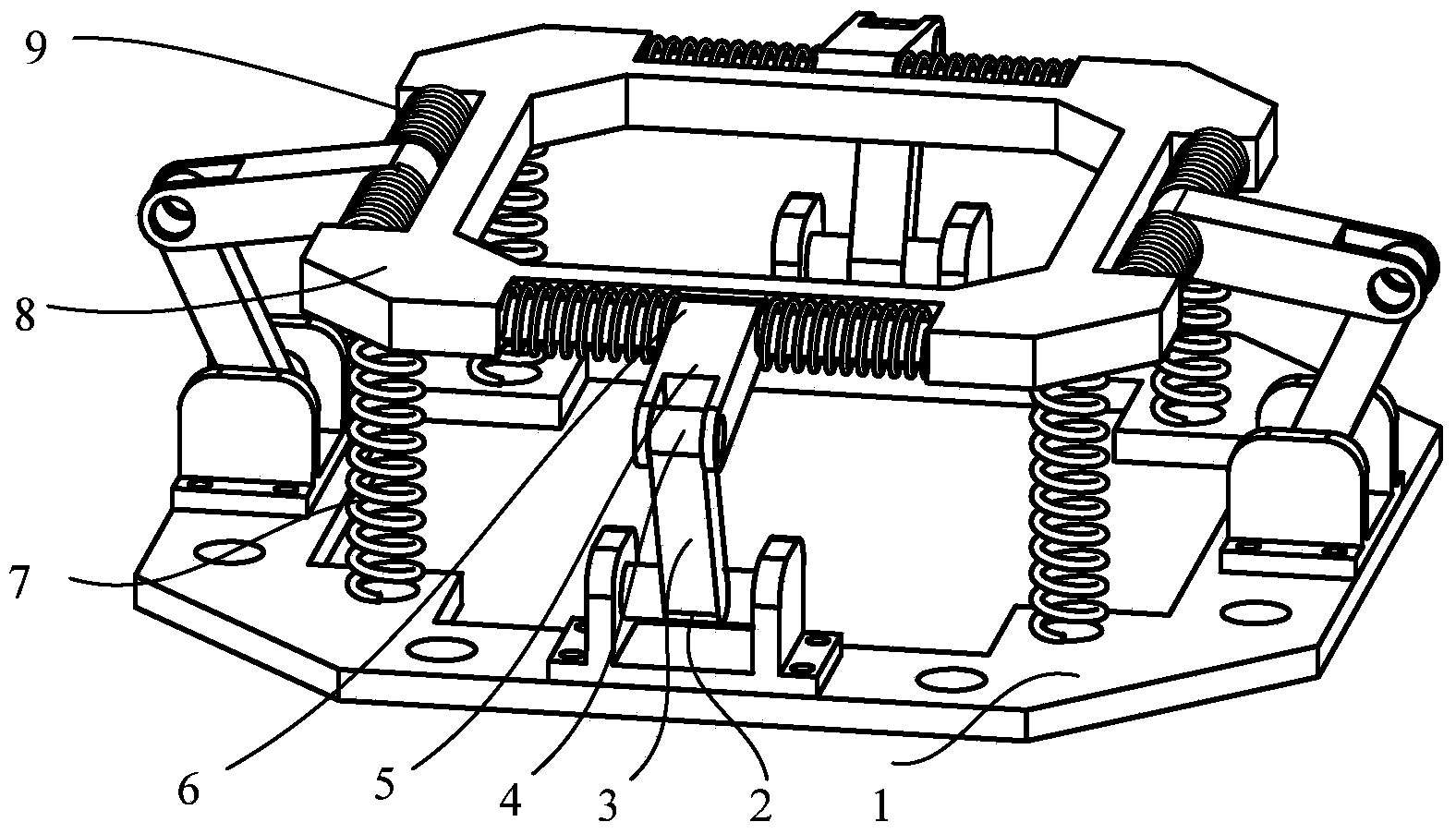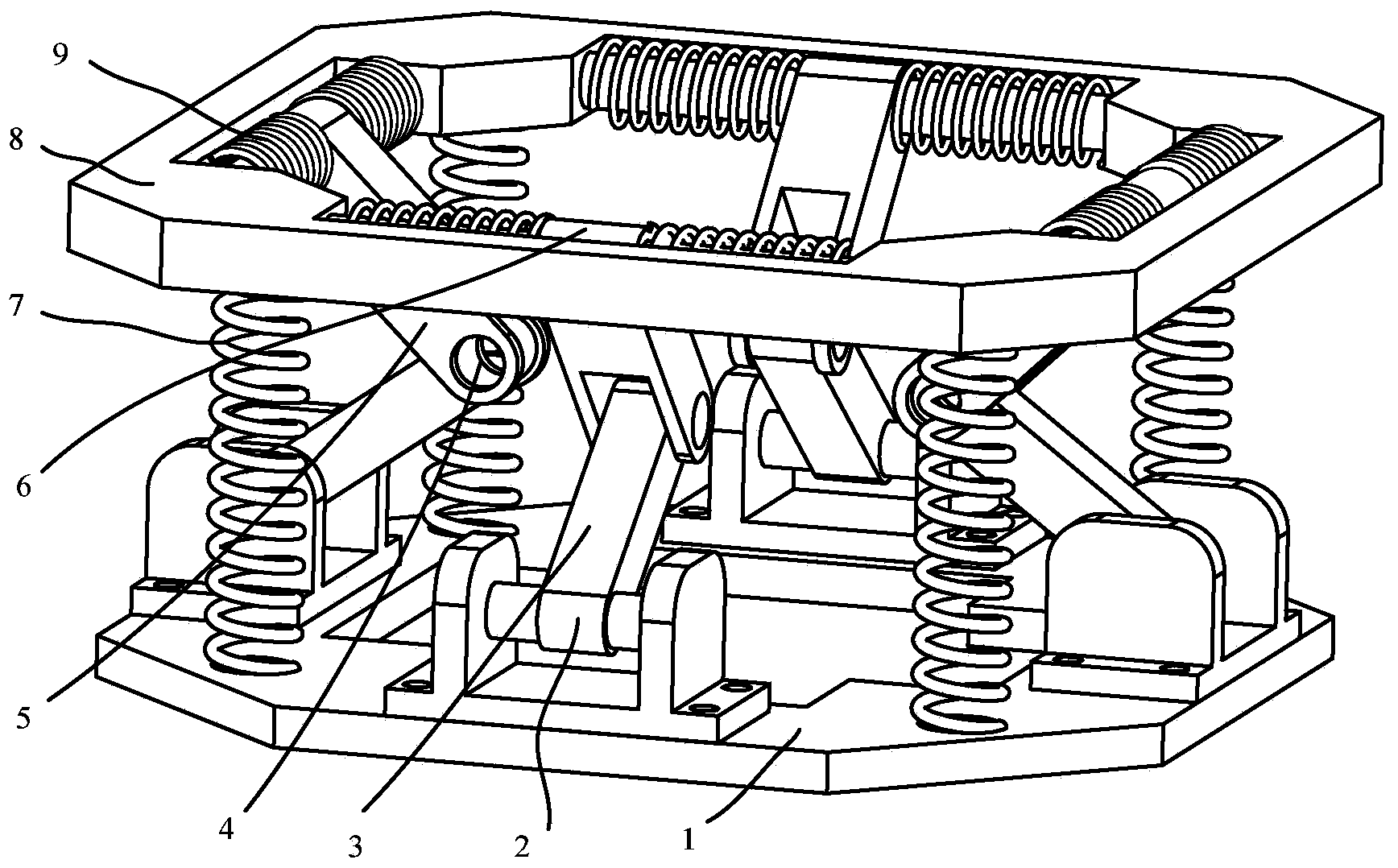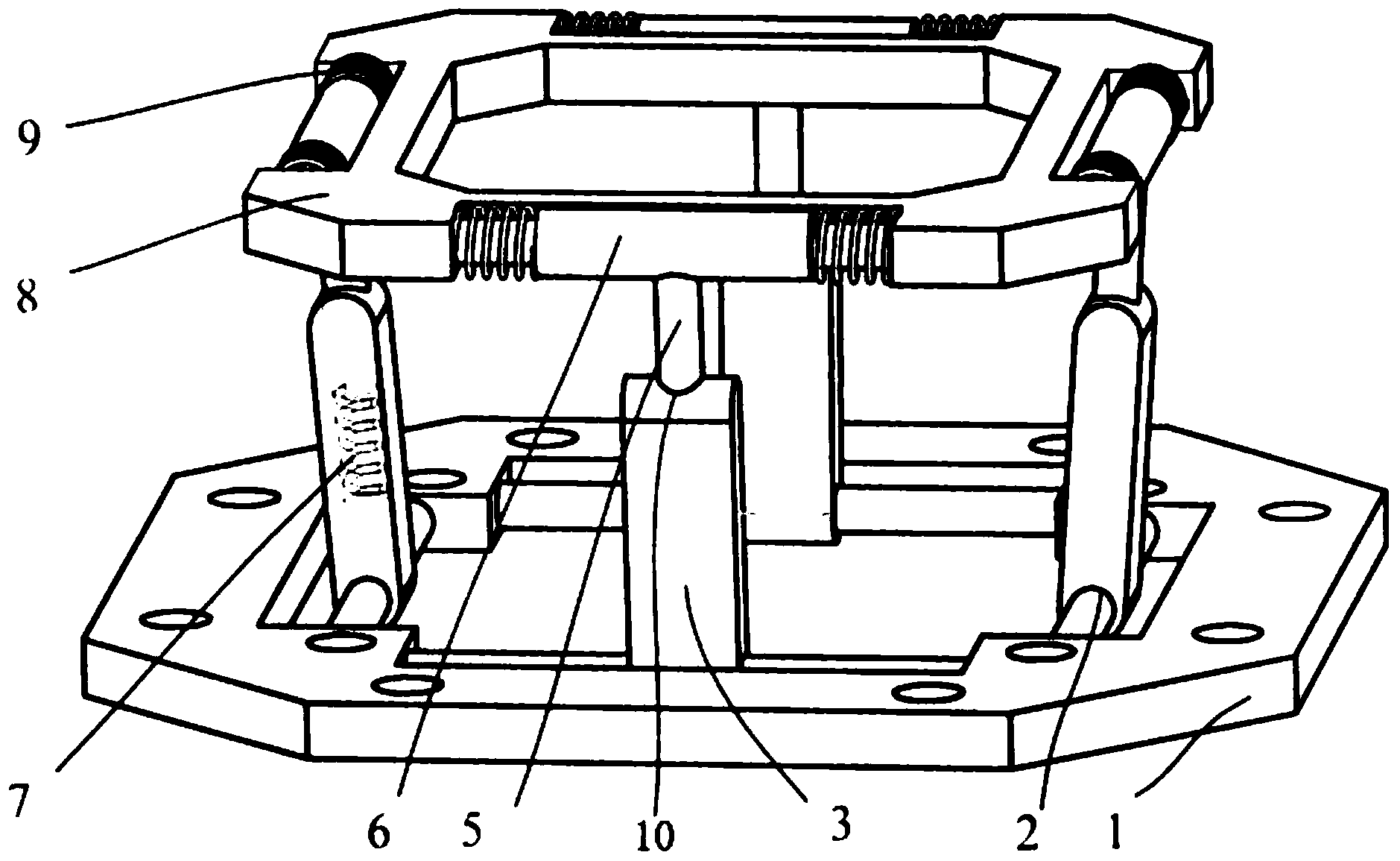None-angular displacement parallel damping device
A vibration damping device and parallel technology, applied in the direction of non-rotational vibration suppression, etc., can solve the problems of limiting the application range of the device, inability to perform vibration isolation, and limiting applications, etc., and achieve the effects of high cost performance, simple structure, and simple processing
- Summary
- Abstract
- Description
- Claims
- Application Information
AI Technical Summary
Problems solved by technology
Method used
Image
Examples
Embodiment 1
[0016] figure 1 In the schematic diagram of the structure of the parallel damping device without angular displacement shown, the four branches are all RRC structures, and one end of the connecting rod one 3 in the branch is connected to the fixed platform 1 through the first rotating pair 2, and the above connecting rod one The other end is connected with one end of the connecting rod 2 5 through the second rotating pair 4, and the other end of the connecting rod 2 is connected with the moving platform 8 through the cylinder pair 6, and the above-mentioned second rotating pair is located outside the moving platform and the fixed platform, and the above-mentioned first The axis of the first rotary pair is parallel to the axis of the second rotary pair, and the axis of the second rotary pair is parallel to the axis of the cylindrical pair. The whole device is square, and the four branches are symmetrically and evenly distributed. The four corners between the fixed platform and t...
Embodiment 2
[0018] exist figure 2 In the schematic diagram of the structure of the parallel damping device without angular displacement shown, the four branches are all RRC structures, and one end of the connecting rod one 3 in the branch is connected to the fixed platform 1 through the first rotating pair 2, and the above connecting rod one The other end is connected with one end of the connecting rod 2 5 through the second rotating pair 4, and the other end of the connecting rod 2 is connected with the moving platform 8 through the cylinder pair 6, the above-mentioned second rotating pair is located inside the moving platform and the fixed platform, and the above-mentioned first The axis of the first rotary pair is parallel to the axis of the second rotary pair, and the axis of the second rotary pair is parallel to the axis of the cylindrical pair. The whole device is square, and the four branches are symmetrically and evenly distributed. The four corners between the fixed platform and...
Embodiment 3
[0020] exist image 3 In the schematic diagram of the structure of the parallel damping device without angular displacement shown in the figure, the four branches are all RPC structures, and one end of the connecting rod 3 in each branch is connected to the fixed platform 1 through the rotating pair 2, and the other end of the connecting rod 1 One end is connected with the connecting rod 2 5 through a moving pair 10, the first damping spring 7 is installed in the moving pair, the other end of the connecting rod 2 is connected with the moving platform 8 through a cylindrical pair 6, and the axis of the cylindrical pair is connected The axes of the cylinders are parallel to each other. At the same time, the second damping springs 9 are set on both sides of the cylinder pair respectively. The whole device is square, and the four branches are symmetrically and evenly distributed.
PUM
 Login to View More
Login to View More Abstract
Description
Claims
Application Information
 Login to View More
Login to View More - Generate Ideas
- Intellectual Property
- Life Sciences
- Materials
- Tech Scout
- Unparalleled Data Quality
- Higher Quality Content
- 60% Fewer Hallucinations
Browse by: Latest US Patents, China's latest patents, Technical Efficacy Thesaurus, Application Domain, Technology Topic, Popular Technical Reports.
© 2025 PatSnap. All rights reserved.Legal|Privacy policy|Modern Slavery Act Transparency Statement|Sitemap|About US| Contact US: help@patsnap.com



